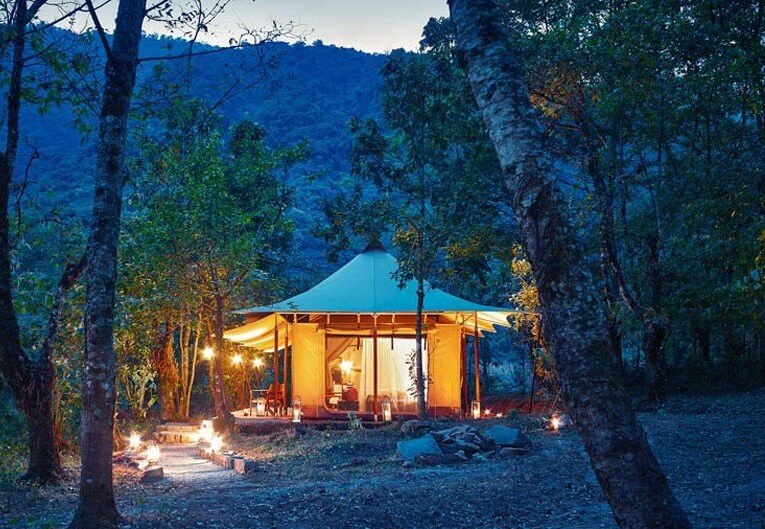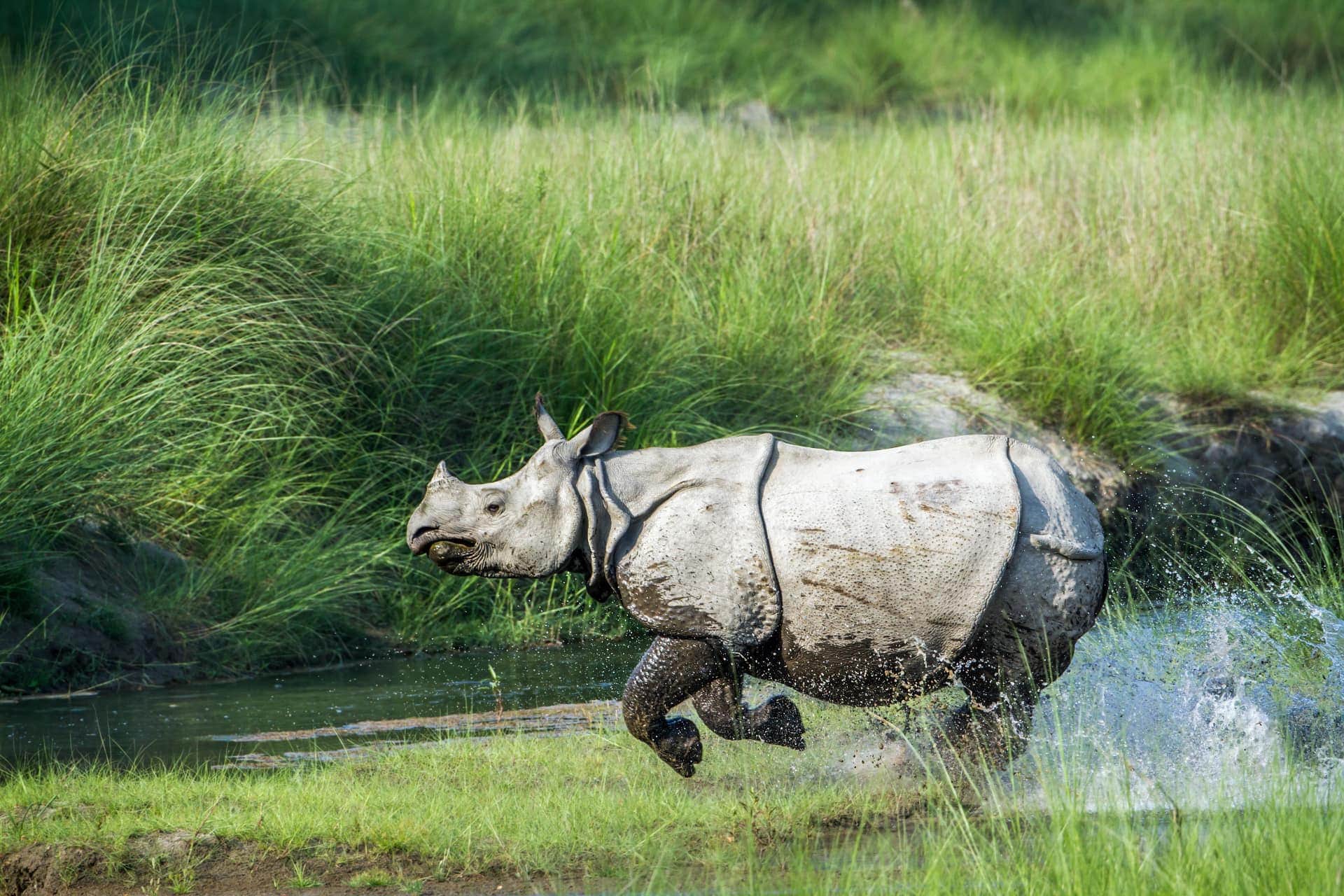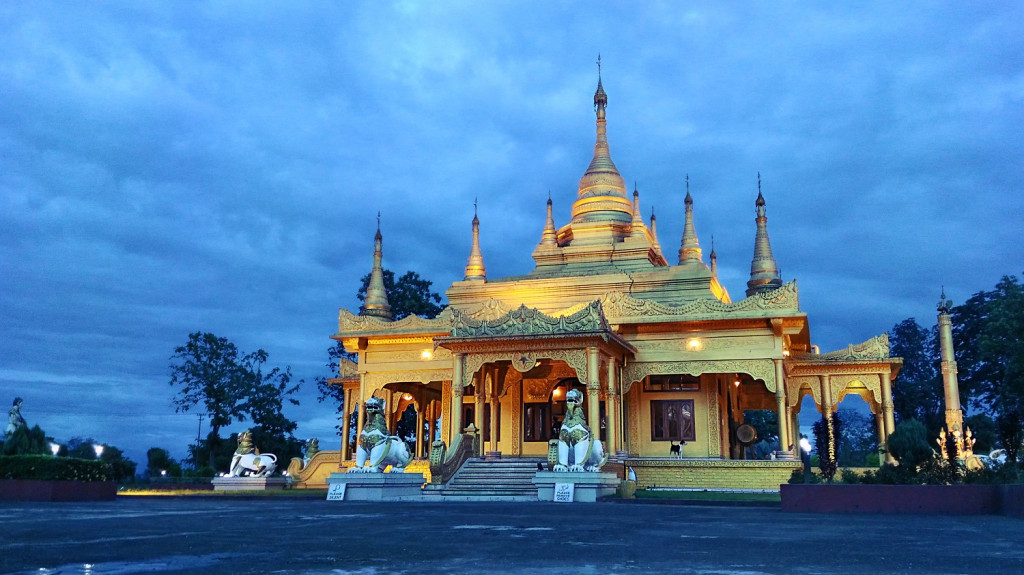
The population of Assam is a broad racial inter-mixture of Mongolian, Indo-Burmese, Indo-Iranian and Aryan origin. The hilly tracks of Assam are mostly inhabited by the tribes of Mongolian origin. The Assamese culture is a rich and exotic tapestry of all these races and has evolved over a long assimilative process. Native Assamese people are called “Asomiya”, which is the same term used for their language. Assam is populated by many distinctive tribes that co-exist peacefully, each unique in its traditions, culture, dress and exotic lifestyle. Despite the wide use of Assamese language as the official language, each tribe speak their own.
Listed below are Assam’s major tribes :
Bodo
The Bodo Kacharies of Assam belong to the great Bodo Group of Indo-Mongoloid family and are believed to have their origins in Tibet and China. The Bodos basic occupation is agriculture and they still use traditional methods of farming and irrigation. They are considered to be experts of bamboo and cane craft, bamboo being the principle material of house building in the Bodo villages. Weaving and silkworm rearing is also an integral part of Bodo culture. The Bodos have their own set of festivals which are either seasonal, religious, ritualistic or ceremonial. The seasonal festivals are Baisagu, Domashi, and Katrigacha. These three festivals run parallel to the Bihu festival. Among the religious festivals of the Bodos, the Kherai is the most famous and the biggest of all their festivals. Staple food of the Bodos comprises of rice and is usually accompanied by a non vegetarian dish of fish, meat or pork. The traditional favourite brew of the Bodos is Zu Mai (rice wine).
Karbi
Racially the Karbis belong to the Mongoloid group and linguistically to the Tibeto-Burman group. The Karbis, along with others entered Assam from Central Asia in one of the first waves of migration. Based on their pattern of distribution or habitation, the Karbi are divided into three groups: Chinthong, Ranghang and Amri. The traditional religion of the Karbis is animistic, however in modern times, a small percentage of the Karbis have adopted the Vaishanava and other Hindu faiths, and a few follow the tenets of Christianity. Karbi people are wholly dependant on agriculture for their livelihood. The Karbi festivals are mainly related to the agricultural seasons. ‘Rongker’ and the ‘Hacha Kekan’ are their two main festivals of the Karbis. The former is celebrated before the Jhum cultivation starts in winter and again in the summer, just prior to the planting of rice. The ‘Hacha Kekan’ is celebrated at the end of the planting season and the dance performed at the harvesting festival is lively and eye-catching. Public feasting and elaborate dances are organized to mark this festival.
The Mising (Mishing)
The Mising, an Indo-Mongoloid group formerly referred to as Miris, are the second largest ethnic group in Assam. Mising tribe moved to Arunachal Pradesh during the 8th century, actually coming from Northern territories through world’s highest lake : Manasa Sarovar. They later migrated down the course of tributaries feeding into the Brahmaputra to the Assam plains in search of a more economically viable life in the fertile riverbanks. The traditional religious beliefs of the Mising are animistic. A typical Mising village is located on the banks of a river and normally consists of 50-60 houses stilted with a thatched roof on a bamboo frame with bamboo flooring. The main source of livelihood for the Mising is agriculture, some fish and some make tools, and household utilities from bamboo. Mising women are renowned for their weaving art, crafting shawls and blankets among beautiful other handlooms. The two chief traditional festivals observed by the Mising are the Ali-Ai-Ligang and the Porag. Ali-Ai-Ligang, the most colourful, is the spring festival and Porag is the post-harvest festival.
Sonowal Kacharis
The Sonowal Kacharis are one of the royal dynasties of the Northeast and are one of a branch of great Bodo-Kacharis, a major tribal community in Assam. They are predominantly inhabitants of the Dhemaji, Lakhimpur, Tinisukia and Dibrugarh districts of Assam. They are also scattered in the districts of Sibsagar, Jorhat, Golaghat and in Nagaland and Arunachal Pradesh. The Sonowal Kacharis belong to the Mongoloid race of people. A portion of Sonowal Kacharis still follow the ancient religion of animism, where nature is seen to be alive with invisible forces, minor deities, and spirits with which priests and medicine men mediate. In the 17th century, with the advent of Satradhikaries, Vaishnawi was introduced. As a result, the population now is predominantly Vaishnawi. Every Sonowal Kachari village has an identical Namghor (temple) that follows strict religious rituals and customs. Bihus are the main festival of the Sonowal Kacharis. Three Bihus, i.e. Bohag Bihu or Rongali Bihu, Magh Bihu or Bhogali Bihu and Kati Bihu or Kongali Bihu are celebrated by the Sonowal Kacharis with great enthusiasm.
Deori
The Deori live along the Brahmaputra River, they are primarily located in the states of Assam, Nagaland, and Arunachal Pradesh. They speak a Tibeto-Burman language which is also called Deori. The Deori are unusual in that they have managed to maintain their tribal identity by keeping themselves free from racial intermixture and intermarriage with other Bodo tribes. The Deori live in villages that are scattered along the river banks, and their homes are built on wooden or bamboo stilts facing the river. One of the noted social peculiarities of the Deori is that entire extended family units live under one roof, until sometimes more than 100 people live in the same house. Today, the Deori are largely Hindu, with the remainder being Buddhists or ethnic religionists, who practice the ancient religions and traditions. The Deoris observe two major festivals during a year, “Ibaku Bisu” in the month of April and “Magiyo Bisu” in the month of January and both are connected with the agricultural activities and are observed before starting the agricultural operations in the fields. Joydam Festival is another major festival observed every year in the month of February. The main objective of the festival is the cultural meet of all the groups of Deoris and to bring a permanent unity in diversity.
Meet the Mising, Kachari and Deori
Several itineraries bring you to Majuli, where you can interact with the Mising, the Kachari and Deori people. These are 2 itineraries you can follow to meet them :


Rabha
The Rabhas are one of the nine Scheduled Tribes in the plains districts of Assam and are widely scattered but mostly concentrated on Goalpara, Kamrup, and Darrang. The Rabhas like to live in compact blocks having 50-100 families. The Rabhas traditionally are animist, however, today their faith is a blend of some Hindu and a few animistic rituals. There are considerable differences in ritual practices among forest Rabhas who still live in the forest and the Rabhas that live in the villages as cultivators. The forest Rabhas follow traditional animistic practices tinged with some rituals of mainstream Hinduism. On the other hand village Rabhas have merged with local Hindus as far as their religious practices are concerned. The traditional economy of the Rabhas in general, is based on agriculture, forest based activities and weaving. In the past, the Rabhas practiced shifting or jhum cultivation. Like most tribal communities, dance and music play an important part in the lives of the Rabhas. Every ritual they perform is accompanied by a dance to ingratiate their deities.
Dimasa
The Dimasa are one of the oldest inhabitants of the Northeast India and one of the many Kachari tribes, living mostly in Dima Hasao in Assam, they are also met in several other districts of Assam, as well as in Nagaland and Manipur. Dimasa means “Children of the Big River” Dilao (the Bhramaputra River actually). Dimasa tend to live on riverbanks and next to streams. The houses are built in two facing rows with a timber superstructure, mud-plastered bamboo walls, and a thatched roof. Agricultural is the principal occupation and main source of livelihood of the Dimasa Kacharis. Despite worshiping their own traditional gods, several Dimasa consider being Hindus. Among the festivals of the Dimasa, Bushu is the most joyous and important community festival celebrated every year on 27 January, when all work at the fields is completed. Thus Bushu is an occasion for relaxation from hard work and is termed as harvesting festival or a festival of rejoicing and merry makinliving mostly in Dima Hasao in Assam, they are also met in several other districts of Assam, as well as in Nagaland and Manipurg.
Tiwas
Tiwa is an ethnic group inhabiting the states of Assam and Meghalaya. They were known as Lalungs in the Assamese Colonial literature and in the Constitution of India, though members of the group prefer to call themselves Tiwa. A striking peculiarity of the Tiwa is their division into two sub-groups, Hill Tiwa and Plains Tiwas, displaying contrasting cultural features. The Hill Tiwas live in the westernmost areas of Karbi Anglong district in Assam as well as in the Northeastern corner of Ri-Bhoi district, Meghalaya. They speak a Tibeto-Burman language of the Bodo-Garo group. The other half have been converted to Christianity since the 1950s. Plains Tiwas live on the flat lands of the Southern bank of the Brahmaputra valley, mostly in Morigaon, Nagaon and Kamrup districts. The vast majority speak Assamese as their mother tongue and their religion share many elements with Assamese Hinduism. Tiwa people are closely associated with the principality of “Gobha” – their king whose territory covers more or less the Tiwa cultural realm. The Gobha king has his mention in the Assamese colonial literature since the early 18th century, as an important mediator in trade between Ahom dominated plains, i.e. Assam, and the Jaintia Kingdom. The historical role of Gobha and the Tiwas as mediators between plains and hills in Central Assam is enacted every year during an old fair, the Jonbeel mela.
Tai-Phake
Tai Phake forms a Thaï speaking tribe based in Dibrugarh and Tinsukia districts in Assam and some of them can also be met in Arunachal Pradesh. The Tai Phake people were believed to have migrated from the Shan kingdom, Myanmar and settled in the rich south bank of the Dihing river in Assam in the 18th century. The main occupation of the Tai Phake people is agriculture and fishing. The Tai Phake people are bilingual. They speak Phake language (similar to that of Shan) among themselves and speak Assamese with an outsider. The houses of the Tai Phakes are built on piles of wood above the ground using materials like takau leaves, timber and bamboo.
Poi Sangken is the major festival of the Tai Phakes, similarly to the Songkran celebration happening in Thaïland. It marks the beginning of new year in the Thai calendar. In this festival people throw water at each other which signifies washing away the sins of one another. They also cleanse Buddha images and statues by gently pouring water over them. Buddha Purnima, the birthday of Lord Buddha in the month of May is also a major festival of the Tai Phakes. On a fullmoon day in February, they celebrate the Poi Mai-ko-chum-fai festival, where countless small piles of wood and hay are constructed on the banks of a sandy river and then set on fire by the people after prayers are initiated by monks in the evening.
You can spend an immersive time with the Tai-Phake and discover their culture more deeply if you follow this itinerary :
Singpho
The Singpho are a tribe inhabiting India, China and Myanmar. In India they reside in the district of Lohit and Changlang in Arunachal Pradesh and in Assam they inhabit the district of Tinsukia and some districts of Sivasagar, Jorhat and Golaghat. The Singpho are the same people as those called the Kachin in Burma and the Jingpo in China. They speak the Singpho dialect of the Jingpo language. Like the Khampti, the Singpho are mainly Theravada Buddhist by religion. Animism is also widely followed in this community. Unlike most hill-people, shifting or jhum cultivation is not as widely practiced by the Singphos, although tea is widely planted. Singphos were the ones who gave British the idea of tea. The Singpho produce their tea by plucking the tender leaves and drying them in the sun and exposing to the night dew for three days and nights. The leaves are then placed in the hollow tube of a bamboo, and the cylinder will be exposed to the smoke of the fire. In this way, their tea can be kept for years without losing its flavor. The Singpho also depended on yams and other edible tubers as their staple food. Singpho dwellings are usually two stories and built out of wood and bamboo. The houses are of oval form; the first floor serves as a storage and stable while the second is utilized as living quarters.
Kuki
The Kukis, also known as the Chin and sometimes as the Zomi are Tibeto-Burman tribal peoples spread throughout the northeastern states of India, northwestern Burma and the Chittagong Hill Tracts of Bangladesh. In Northeast India, they are present in all states except Arunachal Pradesh. Long ignored by the outside world, an important landmark in the history of the Kuki people was the arrival of missionaries and the spread of Christianity among the Kukis. Missionary activity had considerable social, cultural and political ramifications. The acceptance of Christianity marked a departure from ancestral customs and traditions. The spread of English education introduced the Kuki People to the modern era.
Khelma
The Khelma or Khelma Sakachep are one of the old Kuki tribes of Northeastern parts of India. They mainly inhabit the areas of Assam’s Dima Hasao, Cachar and Karbi Anglong districts. Some live in Jaintia hills in Meghalaya and the Peren district in Nagaland. Their lifestyle and habitat closely resemble the other tribes of the Chin, Kuki or Mizo Community. They are entirely dependent on agriculture for their livelihood. The Sakachep celebrate different festivals which are connected with the worshiping of different gods and goddess during the year. Rubu-khat, Parsem, Inmuthung and Rubuthum are such festivals. Rubuthum is the most important of all the ceremonies during which they worship nature. It is believed that one has to perform the ceremony to bring peace in the family.
Tea–Tribe
The Tea-tribes, also called Adivasi, are the tribal people who were brought into Assam by the British colonial planters as indentured labourers from the Chhota Nagpur Plateau region during the British raj. They live in almost every district of Assam but their density varies according to the number of tea plantations in different regions of Assam. Major tribes among them are the Munda tribe followed by Santhals, Kurukh, Gonds, Kharia, Saora, Bhumij, Kui Kanda, Chik Baraik, and Gowalas. Tantis, Kurmis, Karmakar, Telis and other castes are also present among them. Music is an important component of this community and is usually collectively performed for a variety of occasions like weddings, festivals, arrival of seasons, ushering-in of new life, and harvests. Through folk music and dance, they try to convey their perspective on social issues and define their daily life styles and their history. In some dance forms, martial arts are displayed to convey their age-old rebellion against the British. Jhumur dance is a famous folk dance form of this community through which they are identified within Assam. Apart from Jhumur, they also possess other numerous dance forms like Santhali dance, Chhau dance, Karam naach, and Sambalpuria dance which are performed during different occasions.
Festivals
Despite their differences, all these communities share something in common : they developed a rich cultural heritage over the centuries. Festivals are great occasions to live peoples culture from the inside and better understand what they believe, how they live and share and also have fun.
Travel Itineraries
Have a look at some example itineraries in Assam. These tours have been designed and developed based on our on-ground team’s real discoveries and expeditions in the northeastern states and beyond. We create real immersive experiences which allows deep connections with locals.




